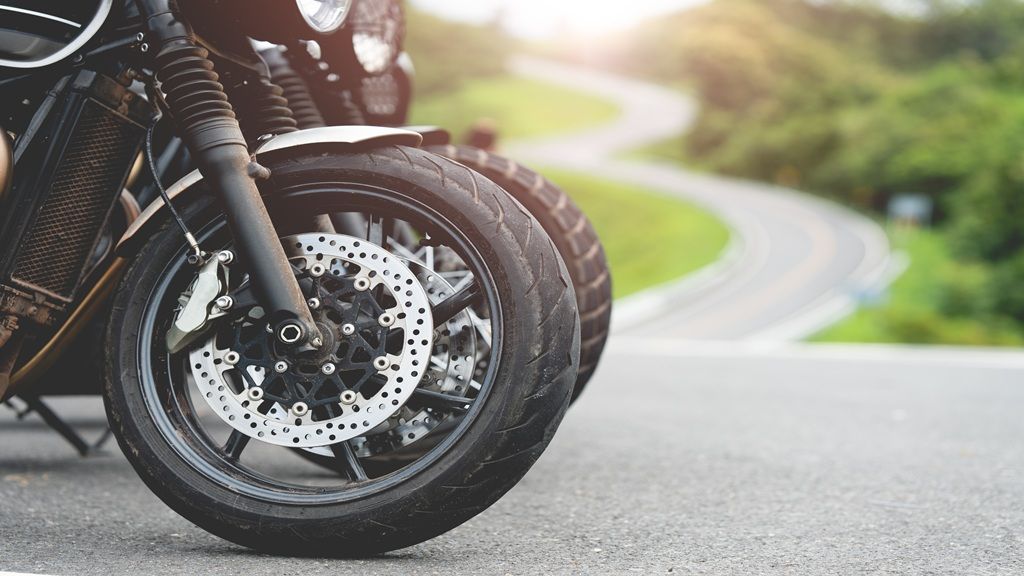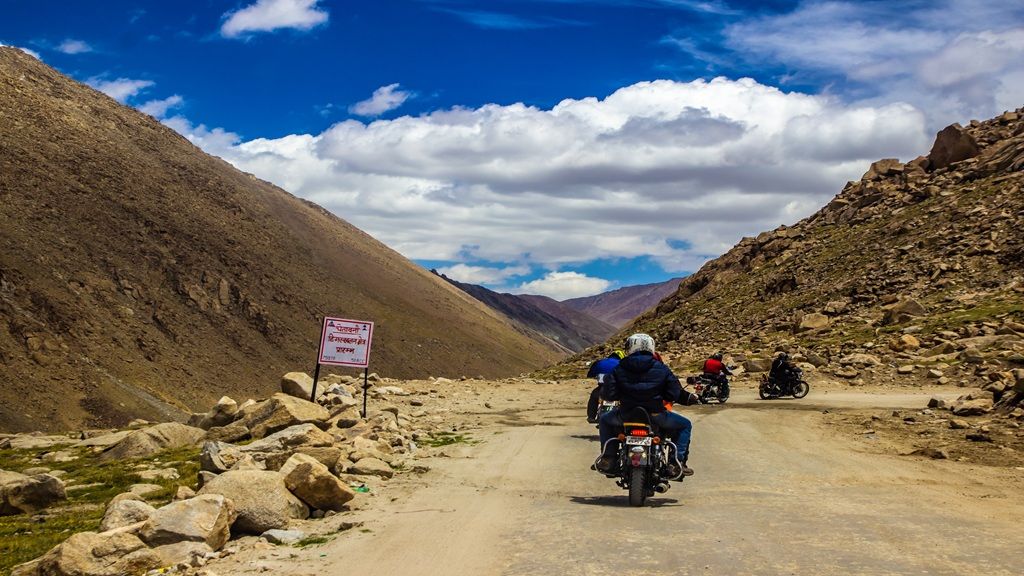Loading...

Tyres are one of the most crucial components of a motorcycle. In fact, a good set of tyres can vastly improve a motorcycle’s capabilities. The right set of tyres also helps the rider gain confidence in their motorcycle and trust themselves more in the process. Thus, it is important to know which type of tyres are best suited for your bike and riding style.
Different types of tyres serve different purposes. So, how many types of tyres are there? For motorcycles, there are two main types—road and off-road. Road-going motorcycles usually get sleek-designed tyres with minimal tread and maximum anti-resistance properties. Off-road-oriented tyres are focused more on motorcycles that like to take the road less travelled and are better equipped to handle dirt, slush, mud, water, and even rocks.

This begs the question: which type of tyre is best for bikes? The answer is that different types of bike tyres cater to different needs of the rider.
As briefly mentioned earlier, road tyres are usually exclusively found on road-based motorcycles. A good road tyre such as the Eurogrip has the following properties:
Road-based tubeless radial tyres can be found in a lot of the bikes that have been launched recently in the Indian market, such as the Aprilia Tuono 457 and the Honda NX200.
The road less travelled, the path less traversed, and the trail that has never been explored—all of these things have a ring of uncertainty and mystery to them. This is where off-road-specific tyres, commonly referred to as knobby, come into play.
This tyre construction type is usually thicker and larger and has a block-thread pattern that helps the tyre to dig up dirt, mud, slush, and all sorts of foreign objects to help the motorcycle grip better. Off-road-oriented tyres can be found on adventure motorcycles, dual-sports, motocross bikes, and generally anything that can or will get on dirt.
Here are the properties of a well-built off-road tyre:

Mixed or hybrid tyres that combine the properties of road and off road tyres are termed dual-purpose tyres. They fare well on both surfaces and are typically equipped on adventure tourer motorcycles.
Dual-purpose tyres are quite versatile and have a mix of road and off-road capabilities. This makes them a great fit for touring, where you can expect different kinds of terrain at different points in your ride: from the smooth tarmac on highways to unpaved roads lined with pebbles.
Road, off-road, and mixed tyres are further divided into two types of bike tyres based on their air-retention capability: tubeless and tube tyres. We highlight their major differences below.
The tubeless type of tyres are commonly found on road-going motorcycles. Sports bikes, street naked bikes, commuters, and even some adventure bikes have tubeless tyres. These tubeless tyres are generally shod on cast alloy rims that are designed in an airtight way. The tubeless tyres, as the name suggests, don’t have tubes in them to hold the air; they rather have an airtight tyre compound and a sealed alloy wheel that keeps the air inside.
In the unfortunate incident of a puncture, a tubeless tyre will lose air pressure much slower than its tube-type counterpart, making it a great choice for long-distance rides and touring. In some cases, air does not even escape from a punctured tyre as the foreign object is stuck in a tight manner, restricting airflow and acting as a sealant, protecting the tyre from air leakage, something that was caused by the object itself.
The tubed tyre is the classic, old-school type of tyre that we as kids used to find on our bicycles. These tube-type tyres are found on off-road-oriented motorcycles and commuter motorcycles that are being built on a budget. Why, you ask? Well, here is a quick explanation:
Tubeless tyres are almost always shod on wire-spoke rims. These wire-spoke rims are only found on motorcycles meant to be taken off-road, where there is a lot of bashing and bumping. The usual cast alloy wheels may not be a good fit since they crack under extreme force and pressure. The wire-spoke rims absorb the impact energy from the ground and distribute it throughout the wheel.
After a mishap, you’re probably looking at a couple of broken or twisted spokes that can be trued back to shape or replaced for a considerably lower price, whereas if it is an alloy, you will be required to change the entire unit. Hence, it is a logical, cost-saving decision for manufacturers to equip motorcycles with wire-spoke wheels and tube tyres.
As standard, wire-spoke wheels have a lot of pores in them and do not have air-sealing properties. An inner tube contains the air and is protected by the tyre on the outside. This makes them easily susceptible to punctures and not so helpful in long adventures and touring scenarios.
The two different types of tyres based on construction are bias ply and radial ply tyres. Bias ply tyres are usually found in trucks and heavy vehicles and have a higher load-carrying capacity. Radials are found in passenger cars and motorcycles. Bias ply tyres have stiffer sidewalls compared to radials. They also transfer a lot of vibrations to the vehicle, whereas radial tyres provide numbing properties.
Bias ply tyres have layers of cords of steel or fabric laid out in 30 to 40 degree angles, criss-crossing each other. Radials have plies that are arranged in 90-degree angles (radially, hence the name). Steel belts are added onto the plies to improve strength.
Bias ply tyres have a higher rolling resistance when compared to radials, which provides better fuel efficiency. The tread wear on bias ply tyres is much higher and occurs a lot faster than tread wear on radial tyres. The weight of the vehicle is also a factor to be considered in this. Bias ply tyres are priced lower than radial tyres generally.
With everything we have covered so far, we know that road tyres are supremely suited for sport bikes, naked bikes, and commuters. We also learnt that off-road tyres are specifically designed for off roading and provide the best features when the going gets tough. Then we have dual purpose tyres that are versatile and perfect for touring.
The tubeless ones are commonly equipped on motorcycles with alloy wheels, and they provide greater convenience. Tube-type tyres are equipped on wire-spoke wheeled motorcycles, and have great impact absorption and lower repair costs.
To summarise, every single tyre in the industry has been designed with a specific use in mind. Most manufacturers pick out tyres for their machines by carefully analysing and working with their research and development specialists to determine which tyre suits their product’s use case the most and provide the best experience to the user.